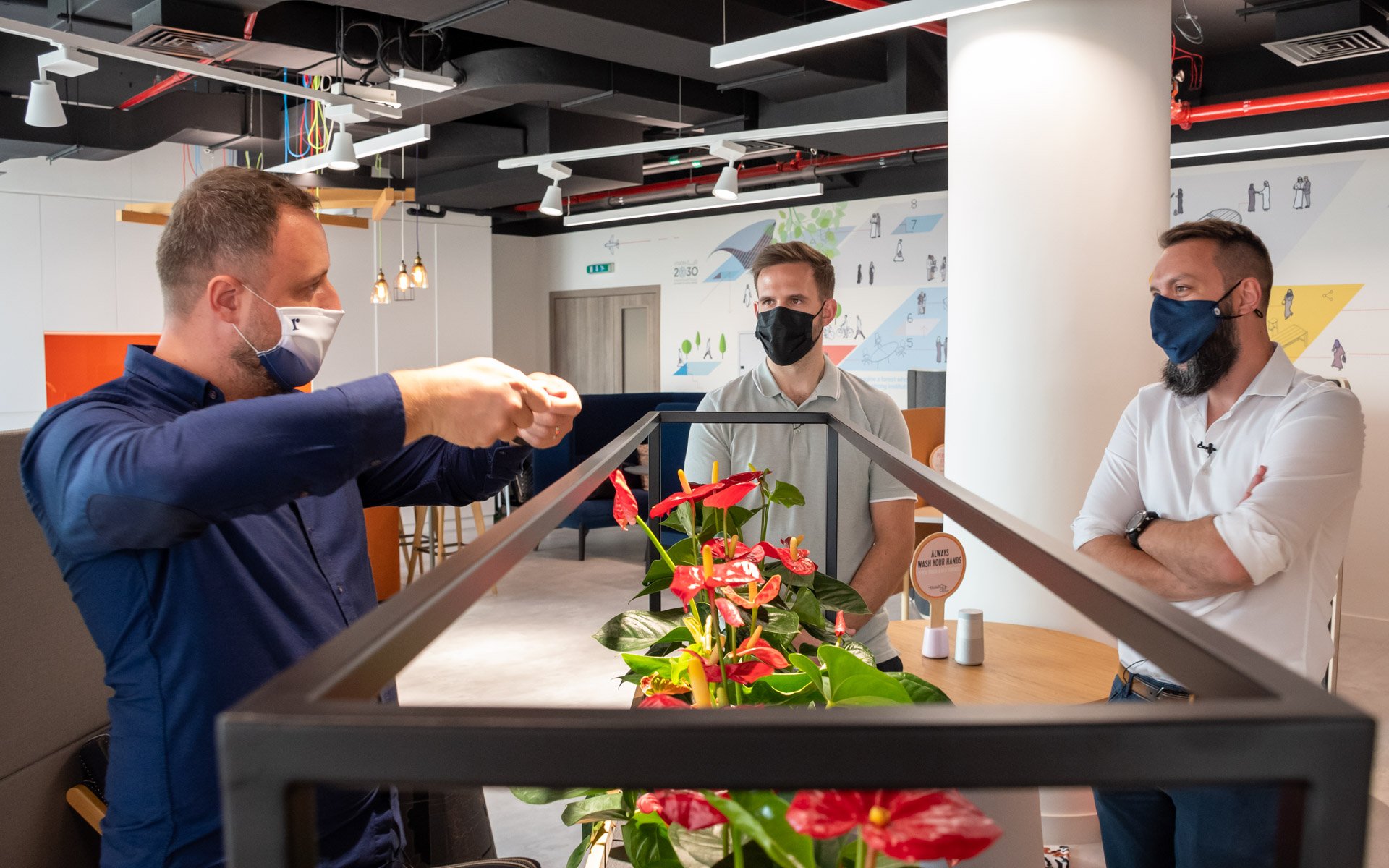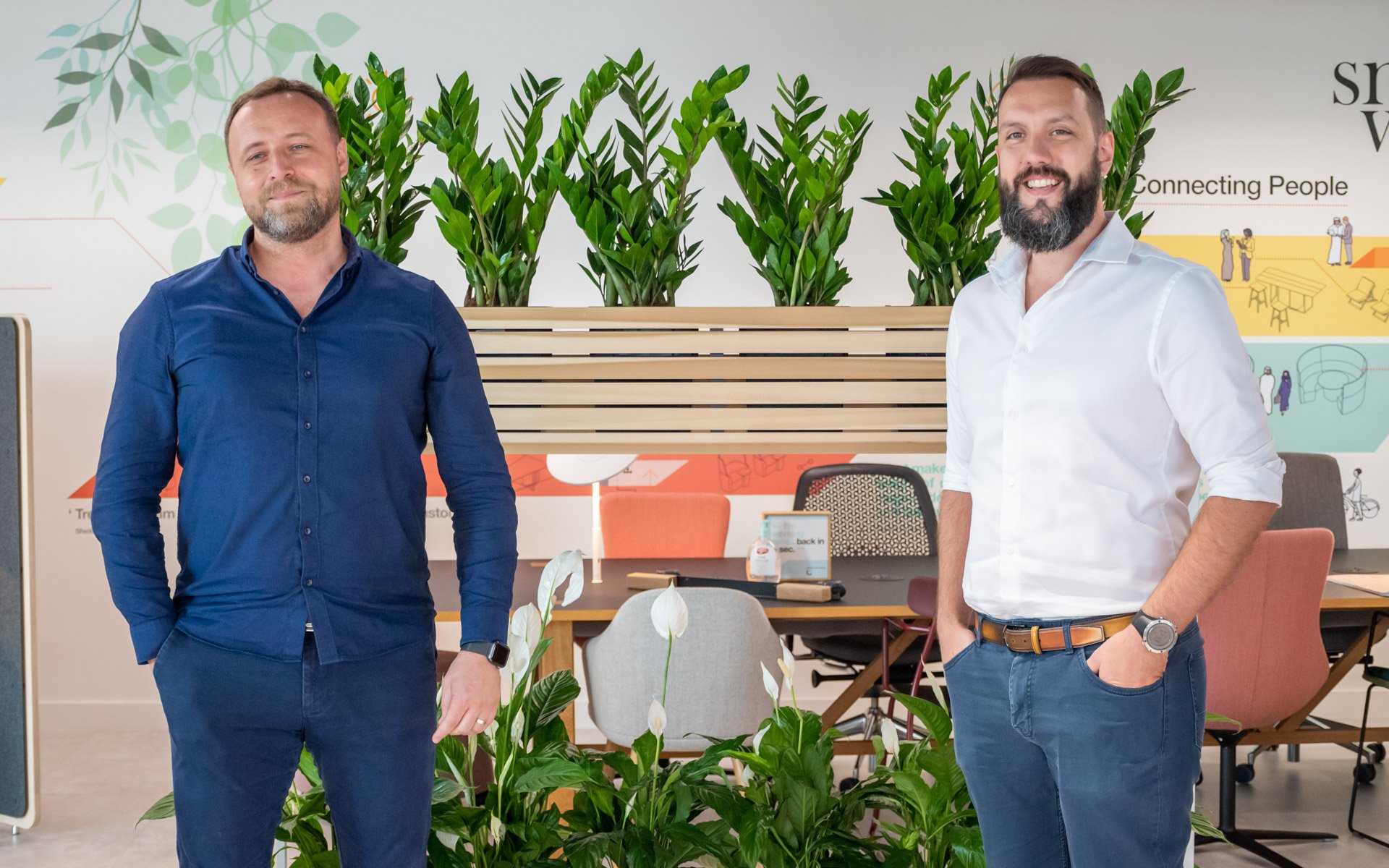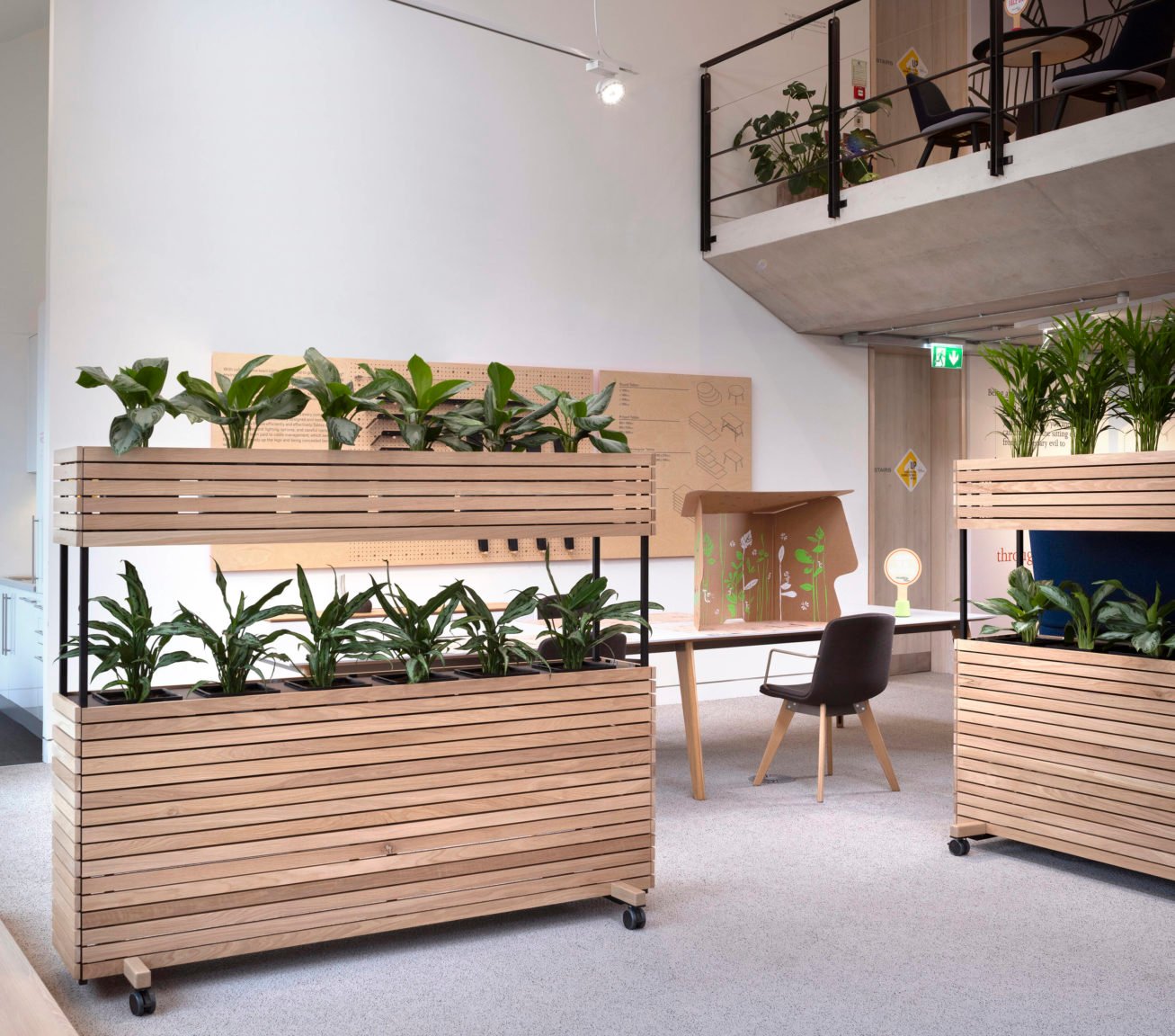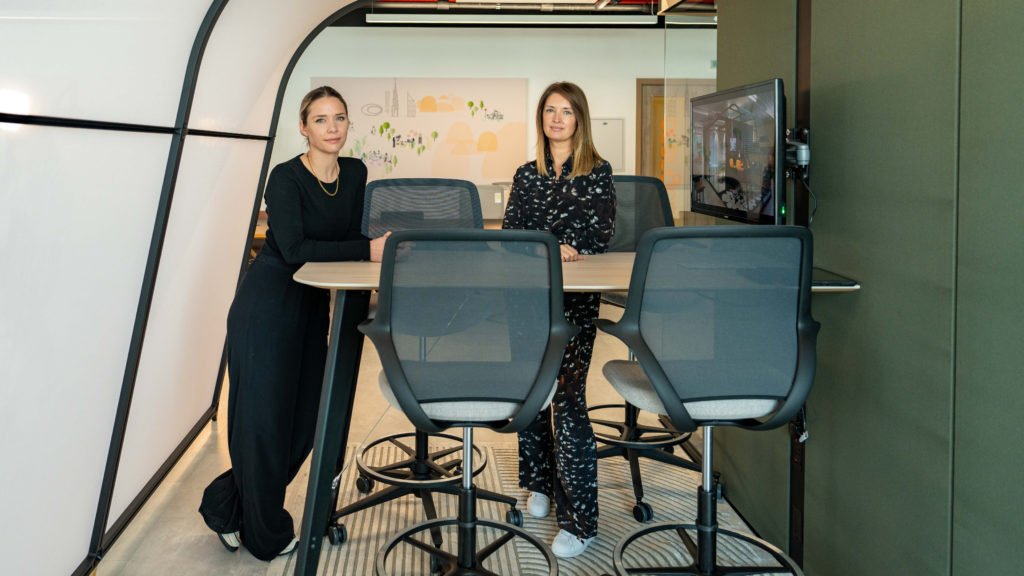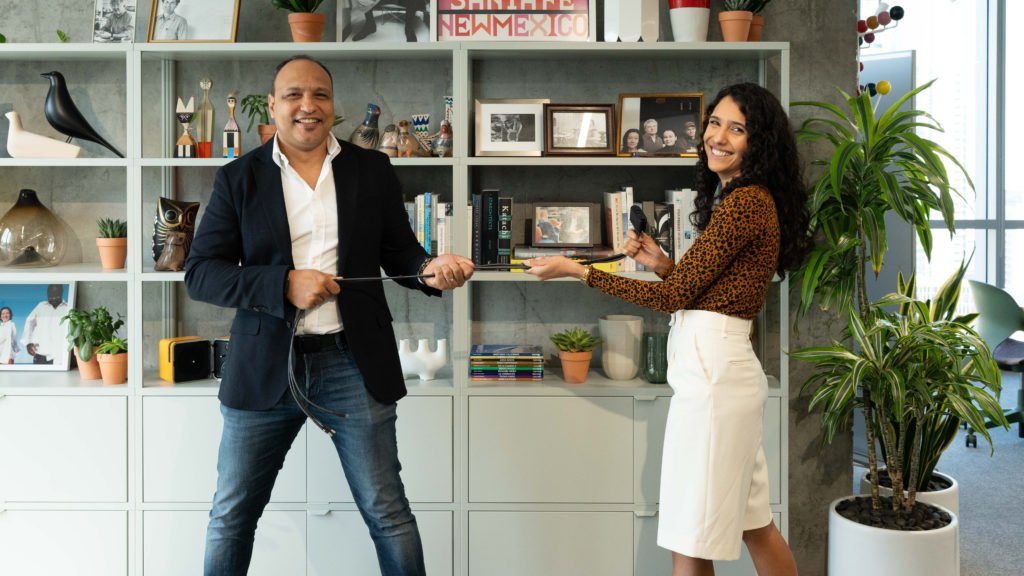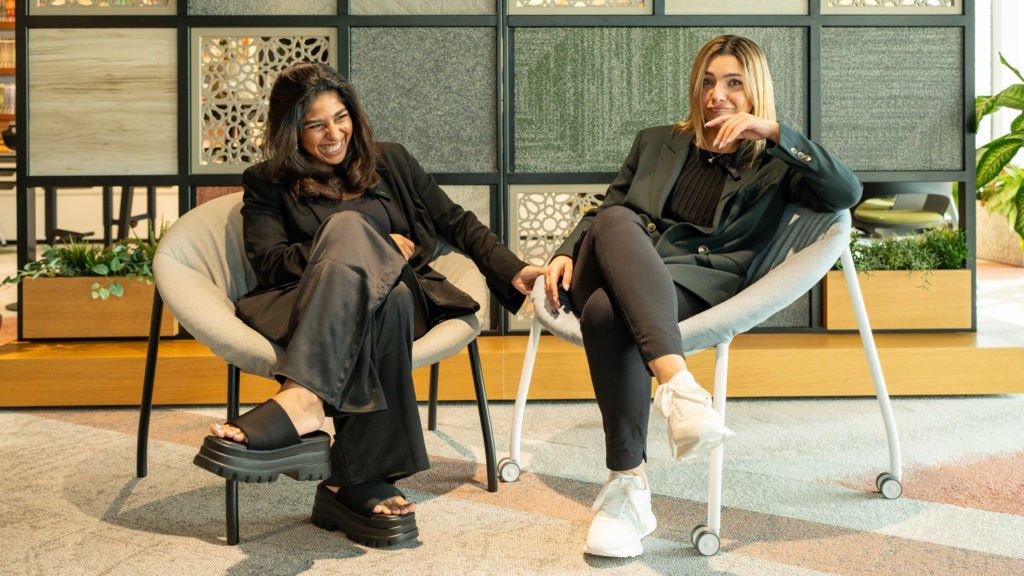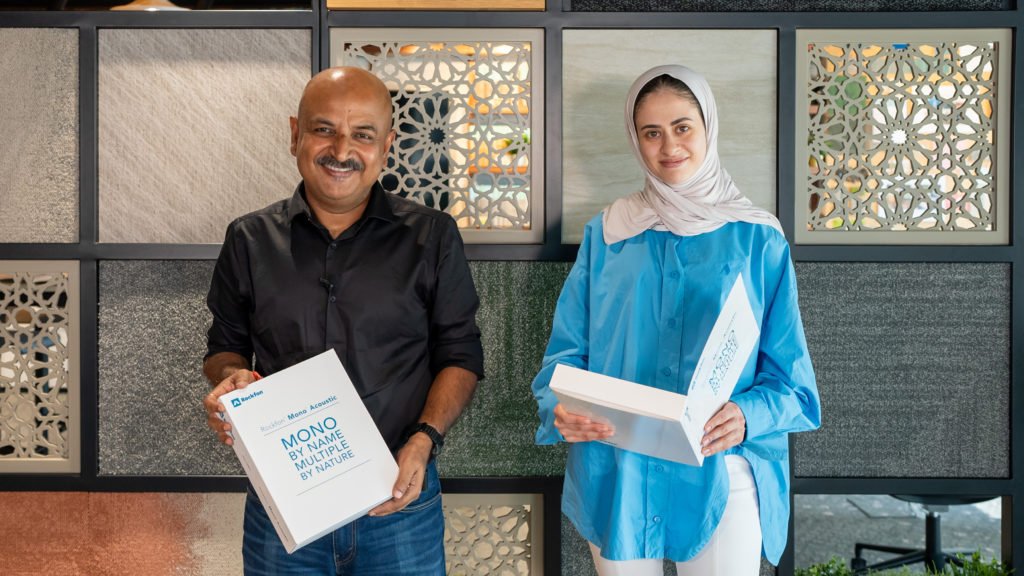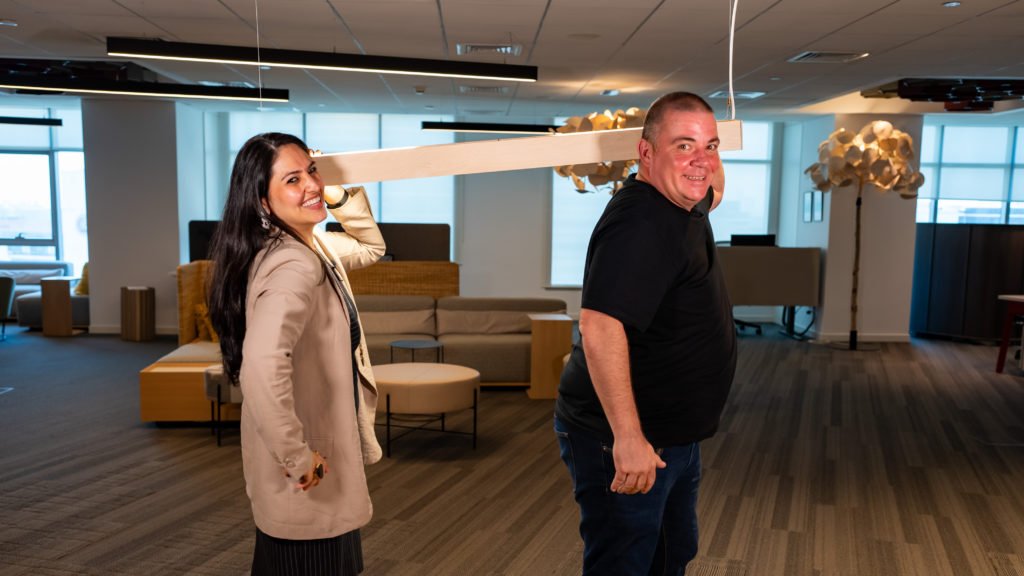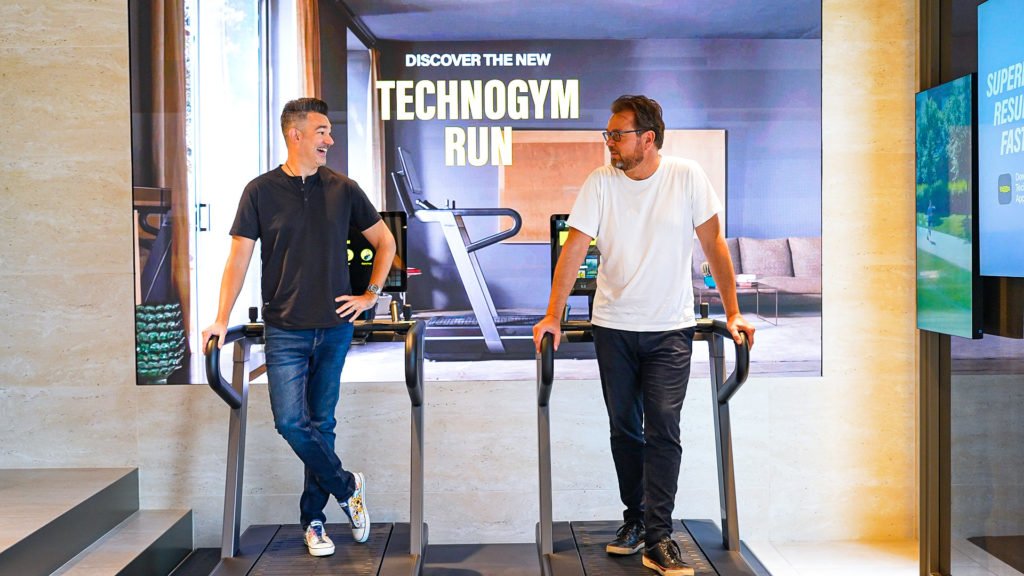Rethinking The Approach To Planters
Planters are usually an afterthought when it comes to interiors. Unless intentionally designed for a purpose, such as a live wall or as part of landscaping, planters get thrown into the FF&E package and aren’t given much attention. Wood is a proactive approach to planters, focusing on creating an engaging and healing environment. “Woods is informed by the principles of biophilia, and is designed to help create areas that are centered in the restorative dynamics of nature,” says Jack.
While traditional planters exist as pots placed in office corners or above storage cabinets, Woods is elegantly designed to serve as a standalone unit. In fact, the design is impressive yet simple enough to serve as a focal point in the office. Available in low, mid, and high height levels, it is designed to effectively serve as a partition. It is also equipped with either glides or castors that function as elegant, mobile alternatives to live walls. Wood finishes in poplar and oak, and a combination of five frame colours (white, black, grey, red and green) offer a decent range of aesthetic combinations to play with. The wood used is certified VOC free and is treated for outdoors, although Orangebox does inform us that it’s primarily designed for indoor use.
However, the most useful feature is the self-watering system. Designed to be low touch and low maintenance, the system can be timed and adjusted according to the plant species that it houses. Given the cost of maintaining plants in large workspaces, the self-watering system is a huge benefit. That, and the five year warranty make it a pretty decent investment!
Michal: I love how it forces us to re-think planters and partitions for privacy. The design is so elegant and simple, and it’ll work well for the resimercial look. I’ve got so many ideas for it to be used in the workspace. Despite its limited finishes, I think it’s comprehensive enough to fit well with a lot of design themes. I can already see it as another design palette to work with!
Gareth: I feel like this is a product we didn’t know we needed until now. It’s great on so many levels. Besides the obvious use as a planter. I’d love to have partitions like these – they offer privacy but don’t totally isolate. I can see this being useful for department heads where they want privacy but don’t want to disconnect from the team. Feels like a departure from corporate design but more towards the co-working look, which is a good thing!
One Product, Many Roles
“Woods touches on five major design trends today – biophilic design, acoustics, flexibility, engagement and simplicity,” says Jack. “That is why it’s such a great product.”
What we love most about Woods is how it’s so much more than a new take on planters. Wood’s nature inspired design enables creation of new types of work typologies previously restricted by glass partitions or fabric panels. Despite its simple design, it invigorates the workplace with natural energy, whilst plants help maintain acceptable acoustic levels without the need for acoustic panels. With five shelf options, there’s a lot of scope for creativity with plants. Woods brings with it an exciting new feature to open offices we’ve not seen before.
Covid-19 has brought on tremendously difficult challenges in the workspace. Organisations are doing their best to create environments where teams are not only safe, but also engaged. With social distance now a limiting factor to interaction and bonding among teams, Woods brings with it a sense of engagement that is acceptable in these times. An interesting outcome of having a product like Woods in the office is how it can create a shared goal among workers in ensuring the health of the plants. This activity can create further healthy engagement, and give people something to look forward to.
Michal: I also love how it’s built to be simple to use, install, move and maintain. Orangebox didn’t reinvent the wheel here, but they did it right. If I could make a suggestion, it would be to hide the glides or castors, and have the wood panel almost rest on the ground. Having them protruding visibly somewhat interferes with the overall design. Additionally, I would add a provision to hang or add accessories like cup holders or writing boards. That would really make it integrate well with the rest of the furniture.
Gareth: The self-watering system is a really useful feature and takes the design to a new level, as I don’t think people are aware of how much it costs to maintain plants. The design too, is beautiful and practical. My design suggestion would also be to hide the glides or castors somehow, as it takes away from the overall aesthetic. I would also request Orangebox to expand its modularity – maybe add curved or other shapes. I believe the product has universal appeal, and I do see it fitting in multiple settings.
So What Do We Think?
Orangebox’s new take on planters is unique and interesting, a clear winner in our books. While we’re convinced of its value, the high price point might be a hard sell. However, given the five year warranty and the significant reduction in maintenance costs by the self-watering system, there is genuine scope to actually save more in costs within the first year alone. This along with its elegant, simple and naturesque design makes it a product that delivers immense value to the new workplace.
Michal: Woods is great in the way it can bring dead spaces to life and make them useful. Its self-watering system and inviting design make people want to care for the plants at the office (most people don’t have the time to do things like that these days).
Practically speaking, there’s always the possibility of the design getting ripped off, but they certainly would not be able to copy the build quality. On the surface, the product is priced on the higher side. But if you look at the five year warranty and the potential savings on the self-watering system, you should be able to convince clients. Sustainability and wellness is still a hard sell these days, so bundling and selling the overall benefits helps a lot.
Gareth: I’m a fan of creating connections between people through design. Woods is a really meaningful way of bringing people back to the office and fostering a sense of responsibility towards the plant’s health. The fact that it’s movable and is a planter means clients can really take ownership of their floor plans. Of course, as designers we always want to see more options for finishes. But as a starting point, this is great. I envision a provision to include accessories would be really useful.
When it comes to price, certain clients and contractors are immediately going to think, ‘we can make this locally for much less’. But when you consider the warranty, recyclable parts, self-watering systems, and the overall design – you will immediately see that you just can’t value engineer this product. It delivers so much and would be a great value-add to any space.

